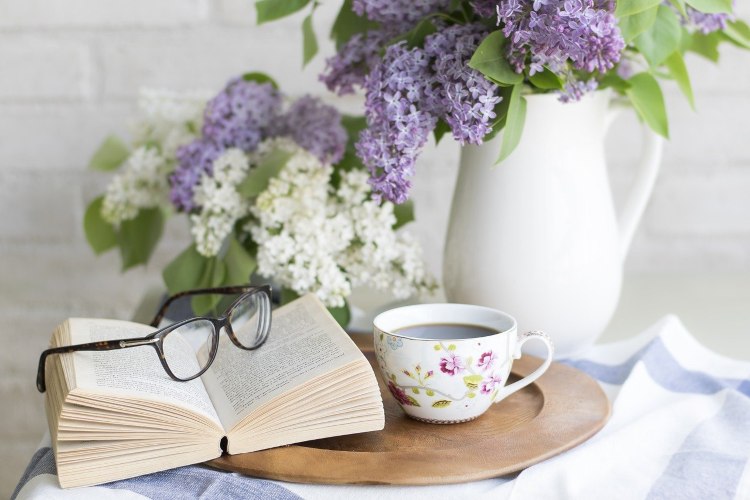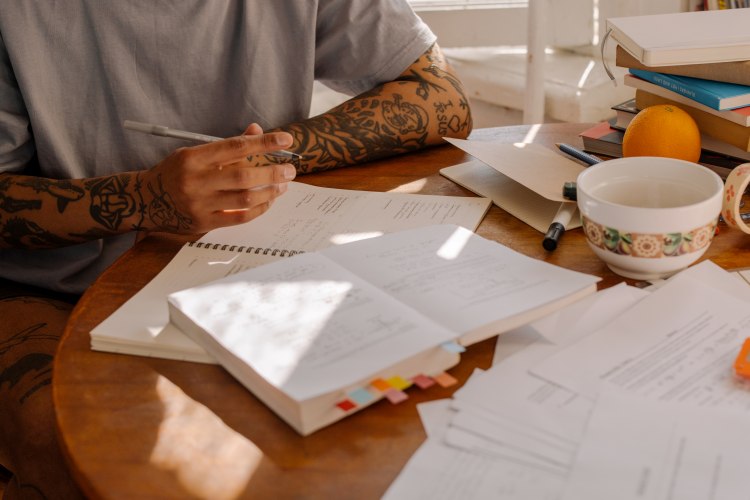This article will teach you how to answer questions on the reading passages asked in the IELTS reading section. One technique that will help you is to skim and scan through the passage, as it is going to save you some time. Go through the passage on the topic – The Birth of Colour Blue.
IELTS General Reading Practice – The Birth of Colour Blue
Section A
Artists have always been inspired by blue, yet fine blues have long been difficult to obtain or create. Blues are relatively difficult to find in nature, and painters throughout the ages have therefore found themselves at the disposal of what contemporary chemical technology could offer.
Some blues have been expensive, yet others were pretty unreliable. The search for a perfect blue has driven some crucial technological innovations, showing that the combination of art and science has not always been a one-sided affair.
Section B
The first pigments were simply coloured minerals that humans dug from the earth. Only a few blue minerals are used as pigments, hence there was no sign of blue in cave art. Ancient Egyptian artists used blue extensively, however, the reason was that they knew how to make a fine artificial colour, now known as Egyptian blue.
Section C
The discovery of Egyptian blue, like that of many other artificial colours, was almost definitely an accident. The Egyptians developed blue-glazed stones and ornaments called faience using a process they learnt from the Mesopotamians. Faience manufacture was a huge business in the ancient world since it was traded all over Europe by 1500 BC.
Faience is developed by heating stone ornaments in a kiln with copper minerals such as malachite. Egyptian blue, which was developed around 2500 BC, comes from limestone or firing chalk mixed with sand and copper minerals and it was developed by accidentally mixing these ingredients in a faience kiln.
Also Read: The Nature and Aims of Archaeology: Find Reading Answers for IELTS Reading Test
Section D
Scientists recently discovered the secrets of another ancient blue: Maya blue, which was used for centuries in Central America before the Spanish invaded them. This is a kind of clay that is made of sheets of atoms with molecules of the blue dye indigo squeezed between the sheets.
Using indigo in this manner makes it less liable to decompose. No one has made colours this way since the Mayans, and no one knows exactly how they did it. But scientists are now interested in using the same process to make pigments from other dyes.
Section E
The finest pigment available to media artists was ultramarine, which began to appear in Western art in the 13th century. It was developed from the blue mineral lapis lazuli, of which only a single source was known: the remote mines of Badakhshan, presently in Afghanistan.
Not only transporting the mineral over long distances was a difficult task, but making the pigment itself was an excruciating process. Lapis lazuli turns grey when powdered showcasing the impurities in the mineral. To extract the pure blue pigment, the powder has to be made into a dough with wax and should be kneaded repeatedly in water.
Section F
As a result, the ultramarine price rose, and medieval artists were very selective in using it. Painters after the Renaissance created a cheaper, more accessible, blue to compare with ultramarine.
Things became better in 1704 when a Berlin-based colour maker called Diesbach discovered the first “modern” synthetic colour: Prussian blue. Diesbach was trying to make a shade of red, using a recipe that involved the alkali potash. But Diesbach’s potash was adulterated with animal oil, and the experiment did not work out as planned. Instead of red, Diesbach made blue.
Section G
The oil reacts to produce cyanide, an important ingredient of Prussian blue. Diesbach kept this procedure secret for several years, but it was discovered and published in 1724, after which just anyone could manufacture the colour.
By the 1750s, the cost of the colour was just a tenth of ultramarine. But it wasn’t a glorious blue, and the painters weren’t satisfied with the result. They got a better alternative in 1802 when the French chemist Louis Jacques Thenard invented cobalt blue.
Section H
The most important event was the discovery of a method for making ultramarine in 1826. The French Society for the Encouragement of National Industry offered a reward of 6,000 francs in 1824 to anyone who could develop ultramarine at an affordable price.
The Toulouse chemist Jean-Baptiste Guimet was awarded the prize two years later when he showed that ultramarine could be made by heating china clay, soda, charcoal, sand and sulphur in a furnace. This meant that there was no longer any need to depend on the natural source, and ultramarine became a relatively cheap commercial pigment (known as French ultramarine, as it was first mass-produced in Paris).
Section I
In the 1950s, synthetic ultramarine became the origin of what is claimed to be the world’s most beautiful blue. Invented by the French artist Yves Klein in association with a Parisian paint manufacturer, Edouard Adam, International Klein Blue is an achievement of modern chemistry.
Klein was troubled by how pigments lost their richness when they were mixed with a liquid binder to make a paint. With Adam’s help, he was able to deduce that a synthetic resin, mixed with organic solvents, would retain its vibrant pattern in the dry paint layer. In 1957, Klein showcased his new blue to the world with a series of monochrome paintings, and in 1960 he patented his invention.
Also Read: IELTS Reading Practice Questions- Finding Information in the Passage | Understanding the Black Hole
The Birth of Colour Blue IELTS Exam Questions
You can go through the below listed solved questions from this passage:
Ques: Go through the following notes that have been made about the type of blue mentioned in the reading passage above. Match each description with the type of blue.
Types of Blue
An Egyptian blue
B Maya blue
C Ultramarine
D Prussian blue
E Cobalt blue
F French ultramarine
G International Klein Blue
- Derived from a scarce natural resource.
- Specially designed to retain its depth of colour when used in paint.
- Was cheap to produce but had limited appeal for artists.
- Made using a technique that is not yet fully understood.
- Thought to have been produced during another manufacturing process.
- Came to be manufactured inexpensively in large quantities.
( Ans: 1 – C, 2 – G, 3 – D, 4 – B, 5 – A, 6 – F)
Tips To Prepare For IELTS General Training Reading Practice Test
-
Try to Develop Skills of Each Type of Questions in Reading
14 different questions types are asked in the reading section and there is a different strategy to solve each question. In some questions, you will find the answers instantly while in other things might not be that simple.
-
Skim and Scan
You should be able to skim through the passages with ease in order to do well in the IELTS reading section. Doing this will give you a general idea of what the content is about. You should be able to do it in 2 to 3 minutes. You should underline any keywords that you see during this time.
-
Try to Develop Your Speed Reading Skills
Since you have only 60 minutes to complete the section, your speed reading skill will be tested extensively. This will help you find answers quickly.
-
Don’t Try to Understand the Complete Passage
You just need to locate answers. Most questions in the reading test will test your ability to find specific information in the passage.
-
Locate Key Words
Each question in the reading section will contain keywords that will help you locate some specific information in the passage and will help you spot the correct answer. Some examples of keywords are names, numbers, dates, places etc.
Conclusion
In this article, you have read a passage similar to what was previously asked in the IELTS exam. This might have helped you understand how you should attempt to solve the questions given in the reading section. You can also refer to the answers in the section. You can also develop your skills as mentioned above. Practice a lot of samples before you attempt the IELTS exam.
Begin your IELTS preparation with IELTS Ninja and improve your performance in your IELTS exam. You can either visit the website or click here to register.










